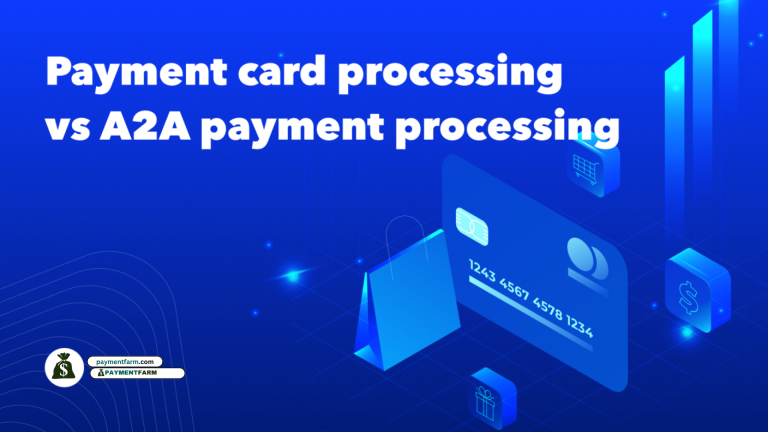Account-to-account, or A2A payments, are a transformative force in Europe’s payments ecosystem. The current Open Banking technology, fuelled by real-time payments systems, offers the new, efficient, secure, and cost-effective alternative to card-based transactions. As more customers adopt Account-to-account payments with innovations, they are becoming the hallmark of the future of payments in Europe.

The Basis of Account-to-account Payments
What are A2A Payments?
A2A payments are considered to be direct transfers between bank accounts without the intervention of intermediaries like card networks. These payments have the power of Open Banking APIs, which enables a real-time and secure transaction.
Real-Time Payments in Europe
Real-time payment systems like SEPA Instant Payments in Europe and the UK’s Faster Payments Service allow for A2A payments. These systems ensure that there are instant settlement payments, which makes A2A payments a preferred choice both for consumers and businesses.
Role of Open Banking in Account-to-account payments

- Open Banking Technology: This is how Open Banking technology changed the game, providing businesses and consumers with access to innovative payment solutions. Open Banking APIs enable seamless connectivity between bank accounts and third-party providers and, therefore, drive growth for A2A fintech solutions.
- Open Banking Initiatives in Europe: The European Union’s PSD2, or Revised Payment Services Directive, is what Open Banking in Europe is actually based on. It compels the banks to securely share the account data with authorized third parties. Such measures led to the widespread use of Open Banking A2A solutions, making payments more transparent and competitive.
- Open Banking Regulations in Europe: While Open Banking regulations in Europe ensure security and data protection, compliance challenges also arise. Yet, they are necessary to achieve consumer and business trust in using A2A payment solutions.
Advantages of Account-to-account Payments
- Cost-Effective for Merchants: Unlike card payments that carry heavy interchange fees, A2A payments are cost-effective for merchants. Direct bank transfers remove the intermediaries, thus minimizing transaction costs.
- Improved Security: Secure A2A payments have bank-grade authentication protocols; hence, they are not as vulnerable to fraud like other traditional payment methods.
- Instant Settlement: Real-time bank transfers allow for instant settlement payments, which is essential in cash flow management for most businesses.
Potential disadvantages of A2A payments
One of the main disadvantages for A2A transfers is that payment processors have to fully integrate them into their current portfolios and add additional features to make them meet the standards of established payments. Moreover, consumers have increasingly demanded instant payment. This has significantly complicated SEPA’s instant credit transfer limitations, which will be largely overcome by the Instant Payments Regulation. The major challenges for merchants are the multiplicity of existing A2A payment schemes and their lack of interoperability. Each scheme requires separate integration. Dispute resolution procedures vary widely or are nonexistent, which causes confusion and adds complexity. Poor implementation of A2A transfers can degrade the user experience. Other problems include difficulties in matching funds and the need to engage a new paying provider if the wrong strategic choice is made.
Use Cases of A2A Payments
- A2A Payments in Retail: Ecommerce A2A payments are becoming increasingly popular as retailers embrace direct payment means to improve customer experience and cut costs.
- B2B A2A Payments: A2A payments are gaining ground for business-to-business transactions. It becomes efficient and transparent for cross-border payments, as well as immediate settlements.
- P2P Payments in Europe: The adoption of A2A payment in Europe can be seen in P2P payments. The use of real-time payments allows money to be sent to friends and family seamlessly and instantaneously.
Challenges in A2A Payment Adoption
- Consumer Adoption of A2A Payments: Despite the benefits, consumer adoption A2A payments face barriers in a lack of awareness and the reluctance to switch from known card-based systems.
- A2A Payment Challenges: The scalability of A2A payment solutions will be determined by technical and regulatory hurdles, such as interoperability across different banking systems and differing Open Banking regulations.
- Open Banking Growth in Europe: While the growth of Open Banking in Europe has been noteworthy, the pace is variable, and some regions remain behind in adopting instant payment platforms.
Innovations and Future of Account-to-account Payments in Europe
- Payment Modernization in Europe: European Payments Initiative (EPI) is a unified payment solution in the making, which attempts to address the fragmentation in the payment systems and A2A payments.
- A2A Payment Providers in Europe: A2A payment providers Europe is continuously innovating, with bespoke solutions for industries that include retail to financial services.
- Trends in Open Banking Europe: The open banking trends in Europe are moving toward the realization of real-time cross-border payments and a better customer experience by delivering tailored financial services.
A2A Payments vs. Card Payments

- Cost and Efficiency: A2A payments do not involve any form of card processing fee; therefore, they remain the cost-effective option for companies.
- Security and Fraud Prevention: Compared to cards, A2A payments offer more security in terms of bank-grade authentication mechanisms.
- Consumer Experience: While cards offer familiarity and rewards programs, A2A payments excel in providing a seamless and instant payment experience.
The Road Ahead: A2A Payments in Europe
- Adoption and Growth: As Open Banking adoption rates increase and real-time payment platforms expand, A2A payments are set to redefine digital payments Europe.
- Merchant A2A Payments: Merchants are expected to increasingly adopt A2A payment gateways, leveraging their cost-effectiveness and speed.
- Open Banking for Businesses: Businesses can benefit from payment innovations Europe by integrating A2A payment solutions into their operations, enhancing efficiency and customer satisfaction.
Conclusion
A2A payments, driven by the power of Open Banking and real-time payment systems, are leading the modernization wave in Europe. Challenges for its adoption will not dampen the prospects of the future as consumer and merchant take-up are becoming increasingly innovative, cost-effective, and secure. As this new landscape takes shape, A2A payments will be key in making the future of payments Europe one of the most attractive alternatives to traditional card-based systems.
Faqs
What is an Account-to-account payments ?
Account-to-Account payments means direct bank transfers between buyers and sellers without the use of intermediaries or other paying instruments like cards, for instance.
What are the differences between Account-to-account payments and the traditional payment method?
The great thing about Account-to-account payments is that it has no intermediaries such as banks or payment processors to go through. Hence, payments directly between bank accounts allow a much faster settlement of funds-mostly instant or in short minutes-with less waiting time involved.
How long do Account-to-account payments take to process?
The account-to-account transfer is largely available to the merchant in no time since they are spared going through the unnecessary intermediate steps like that by the bank card networks.
What sectors will be positively impacted by Account-to-account payments?
Online retailers, gig economy platforms, and businesses dealing with cross-border transactions will all benefit from the reduction of processes, cost-cutting, and increasing customer satisfaction through A2A payments.
What are some examples of Account-to-account payment use cases?
- Retail: A2A payments are used for seamless e-commerce transactions.
- B2B Payments: They simplify cross-border payments and enable instant settlements.
- P2P Payments: Real-time transfers are ideal for peer-to-peer transactions like sending money to friends or family.
What challenges do A2A payments face in Europe?
A2A payments face hurdles like integration complexities, interoperability issues between different schemes, and varying regulations across regions. Additionally, consumer awareness and adoption remain a challenge.
How do real-time payment systems support A2A transactions?
Real-time payment systems like SEPA Instant Payments in the EU and Faster Payments in the UK enable instant transfer of funds, making A2A payments efficient for both businesses and consumers.
What industries are most likely to benefit from A2A payments?
Sectors like e-commerce, subscription-based businesses, gig economy platforms, and cross-border trade will gain from the cost savings, speed, and efficiency of A2A payments.
What is the future of A2A payments in Europe?
The future looks promising, with increasing Open Banking adoption, advancements in real-time payment platforms, and initiatives like the European Payments Initiative (EPI) aiming to unify and enhance A2A systems. A2A payments are expected to become a mainstream alternative to traditional payment methods.
